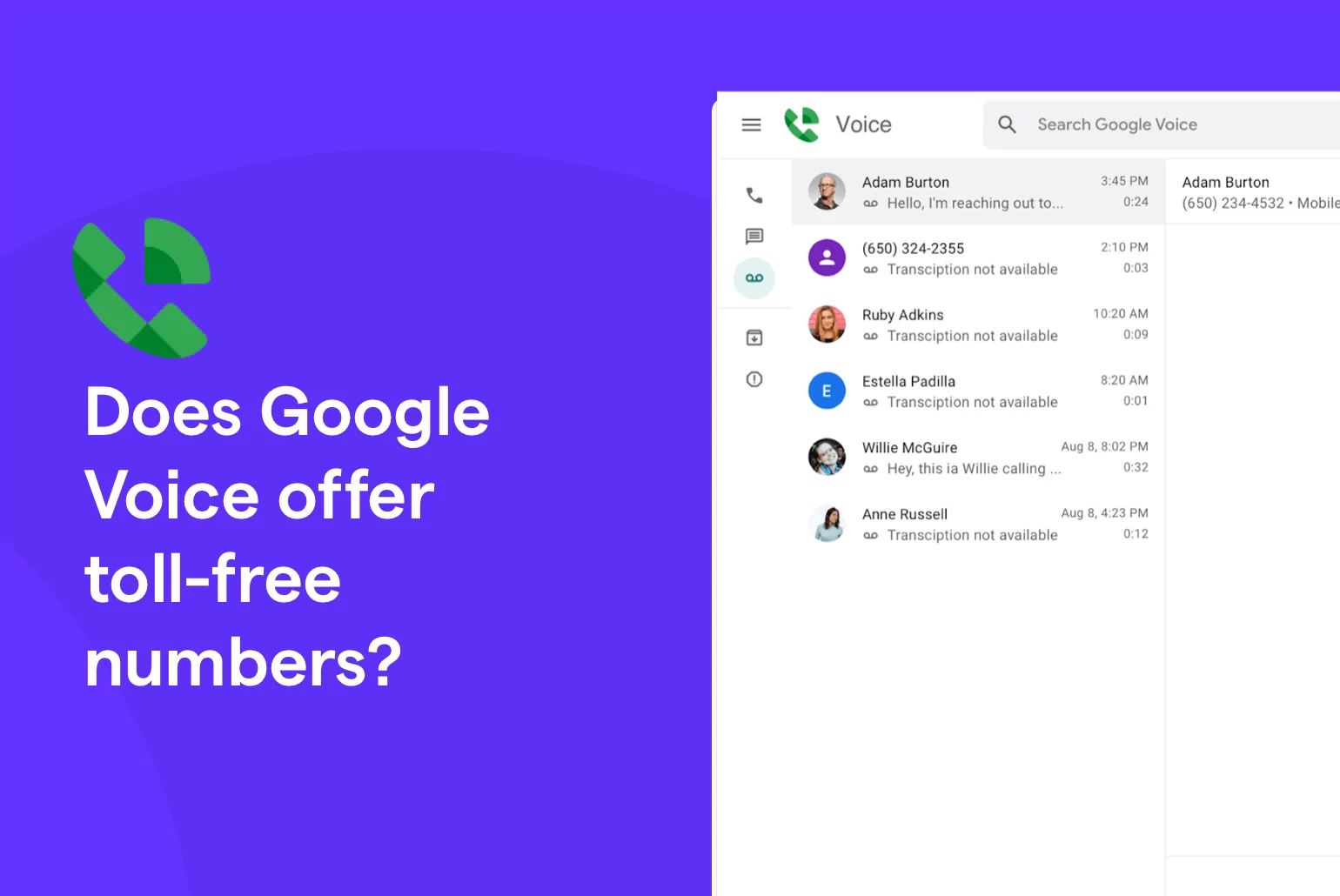Thinking about buying or porting toll-free phone number to a Google Voice account? Keep in mind it’s not possible to have a Google Voice toll-free number. All toll-free area codes, such as 855 and 888, aren’t available through Google Voice.
Neither the free version nor their paid plan provides access to vanity numbers, and you can’t port in existing phone numbers either. The most you can do is use local numbers with their respective area codes and only one number per Google account unless you jump through a few hoops.
Well, that’s fine, you say. There are many other things to do on Google Voice that make up for the difference, right?
Maybe not.
Not only is Google Voice lacking advanced features that modern companies need to scale but they struggle to combine functionality with practicality in their web browser and mobile app.
But don’t just take this at face value; besides no Google Voice toll-free numbers, there’s a lot about Google Voice that might not live up to your expectations. This article dives into Google Voice’s major limitations, including its constraints on user limits, text messages, and more. And by the way — if you still need to get a toll-free number for your team, we’ll walk you through the process of getting one up with OpenPhone.
Beyond no toll-free numbers, what other major limitations are there to Google Voice?
Google Voice looks like a reasonable VoIP phone provider on the surface. However, when you start to dig deeper into the features and integrations provided, you’ll realize just how limited the platform is. And by the looks of these not-so-happy customers, you’ll be in good company.
If you’re weighing the pros and cons of Google Voice, here’s a closer look at Google Voice’s biggest business limitations. 👇
1. Google Workspace is required to use Google Voice
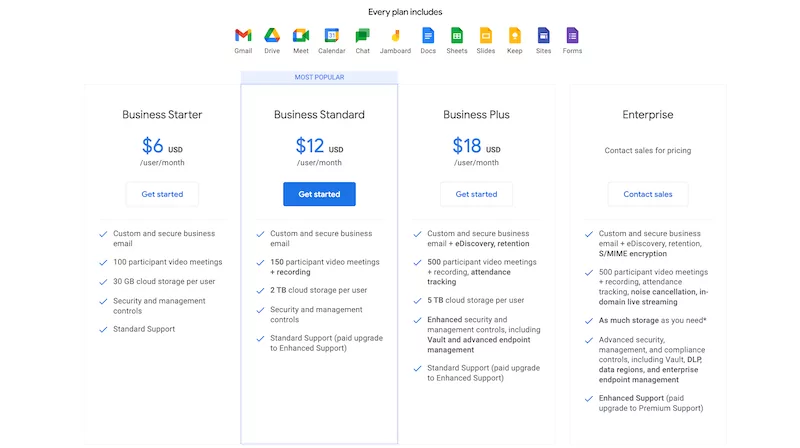
Yep, you read that right. Google Voice for personal use might be free, but it comes with minimal features that don’t translate well to the business world. Their free plan doesn’t let you set business hours, have more than one number, or even be able to sign up if you don’t have an existing US phone number.
Commercial users will be required to pay a minimum of $6 per user per month alongside Google Voice’s pricing ($10 per user per month) to be able to sign up for Google Voice’s paid business plan.
That’s a minimum of $16 per month total, and just for one user. 💸
2. You must upgrade if you have more than 10 users
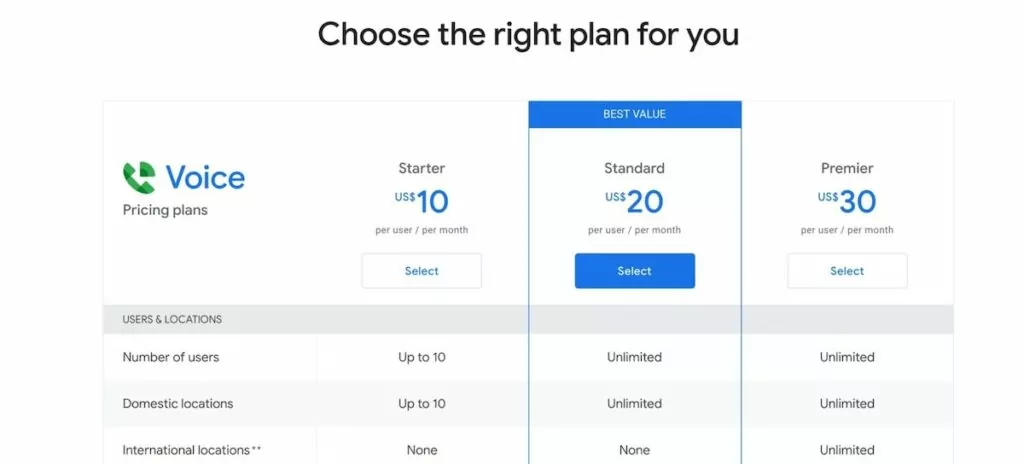
Google Voice only lets you have up to 10 users on their base plan before you’re forced to upgrade to their $20 per user per month plan.
3. You won’t have access to external integrations
The basic plan of Google Voice does come with integrations, but only for the G-Suite line of products. Think Gmail, Google Calendar, Google Drive, Google Meet, and other Google apps. With Google Voice, you don’t have access to platforms like Zapier and Salesforce or anything that adds external functionality to your CRM or Slack workspaces.
If you want to save time on routine tasks or to automatically push your conversation history elsewhere, Google Voice isn’t the platform for you.
4. All communications are separated
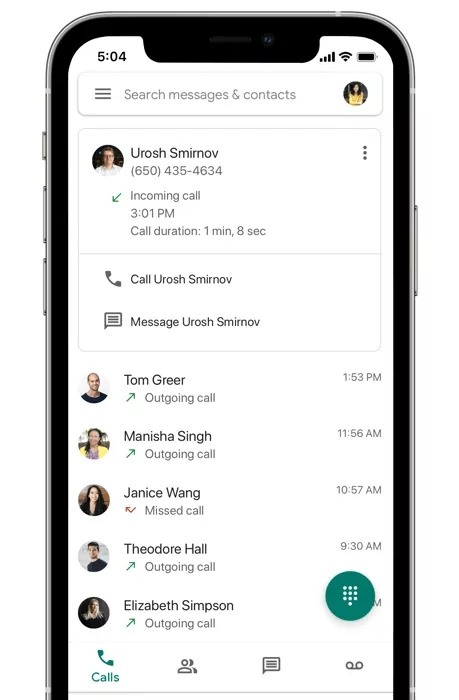
Staying on the same page with all incoming calls and messages from your customers is the core of providing a great customer experience. Unfortunately, Google Voice doesn’t make it very easy to do this.
All text messages and voicemails are kept in separate inboxes and aren’t easily shared between teams. Worst of all, users can’t review communications between one another before they go out, which could create a massive bottleneck of redundant work for incoming calls.
5. There’s no shared team collaboration
Put simply, Google Voice has no simple ways for teams to collaborate on external communications. Their platform doesn’t have shared inboxes where you can view all calls, texts, and voicemails in a single space. You can forward calls in Google Voice, but you end up with a very small amount of context for the call; reviewing those conversations later is impossible.
Call recordings also aren’t an option inside Google Voice to bring other team members up to speed except if you upgrade to their Starter plan ($20 per user month).
If you’re looking for a way to collaborate on phone calls with multiple members of different teams, Google Voice won’t offer a solution right out of the box. And maybe that wouldn’t be a problem with some integrations on the side, but as we discussed previously, that’s not an option here.
6. Country-related limitations
Google Voice’s functionality stems in some cases on where you live (hint: American territories). Unlimited calling and texting on Google Voice are only available to users in the US.
What’s more, free calling to Canada is only for phone calls made within the United States. If you happen to have many clients overseas or live outside of the US, Google Voice may be hard to integrate with your daily workflow.
7. No ways to save time texting
Automating routine questions, actions, or activities can save an enormous amount of your resources. About 45% of business processes could be automated using existing technology, saving up to 50% more time and money. Phone automations aren’t just a frilly extra; they’re essential to business growth.
But Google Voice doesn’t offer any of this, except a very basic IVR (also known as auto-attendant) function. If your team needs to send similar text messages repeatedly you won’t be able to save those as snippets in Google Voice. Auto-replies through Google Voice also aren’t possible if you want to set expectations on incoming text messages that your team is out for the day or just temporarily busy. Other automated touchpoints via text aren’t supported at all.
Which leads us to our next point –
8. Sending business text messages to multiple recipients is not supported
Google Voice’s support for both group messages and bulk texting is extremely limited. Users can only text in groups of up to 7 people, and only with a human touch (automation is strongly discouraged). Attempting to message more people than this at once could result in a suspension or ban from Google Voice.
Any sort of larger-scale/mass text messaging isn’t available through Google Voice.
9. Google Voice doesn’t have a desktop app
If you wish to easily toggle to an app to take incoming calls, Google Voice doesn’t have a dedicated separate app for computers. Instead, you must use the current version of one of these browsers to use Google Voice:
- Chrome Browser
- Microsoft Edge
- Mozilla Firefox (Windows and Mac)
- Safari
10. No ring groups available on the basic plan
For the uninitiated, ring groups (AKA round-robins 🐦) are a simultaneous calling system that notifies all or some members of a group about an incoming call. The ringing stops when someone answers the phone or when the call is sent to a voicemail greeting.
A ring group is an excellent feature for teams looking to increase their communication flexibility and responsiveness. The trouble is, Google Voice only offers this on their Standard or higher plans — which cost at least $20 a month per user.
Prices can add up quickly, and for small businesses just getting their feet wet, this might become a massive drain on internal resources.
Moving other existing Google Voice phone numbers to OpenPhone
If you’re tired of being limited by Google Voice and are actively looking for an alternative solution, porting your number to a new provider that offers toll-free numbers should be your next step. As a current GV subscriber (For the free version, read below for instructions on how to port a number out from their paid plans), you’ll first need to unlock your Google Voice number in preparation for porting. 📞
It’s easier than it sounds:
- Head to www.google.com/voice/unlock, or go to voice.google.com, select ‘Help,’ then type ‘Port or transfer your personal Google Voice number.’
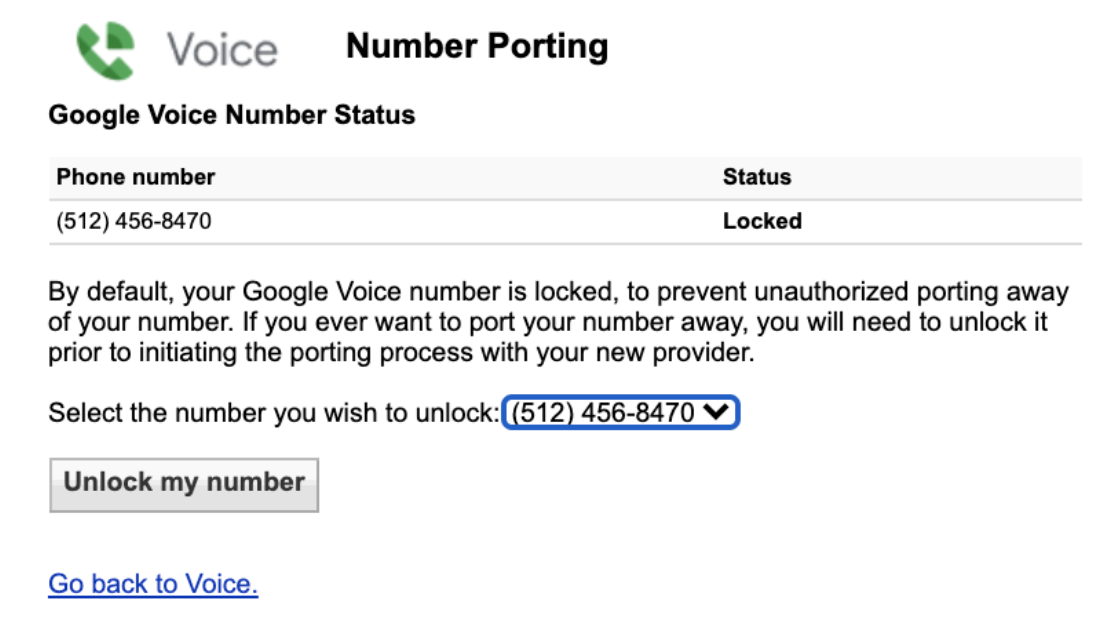
- Select the number you want to unlock, then press the ‘Unlock My Number’ button.
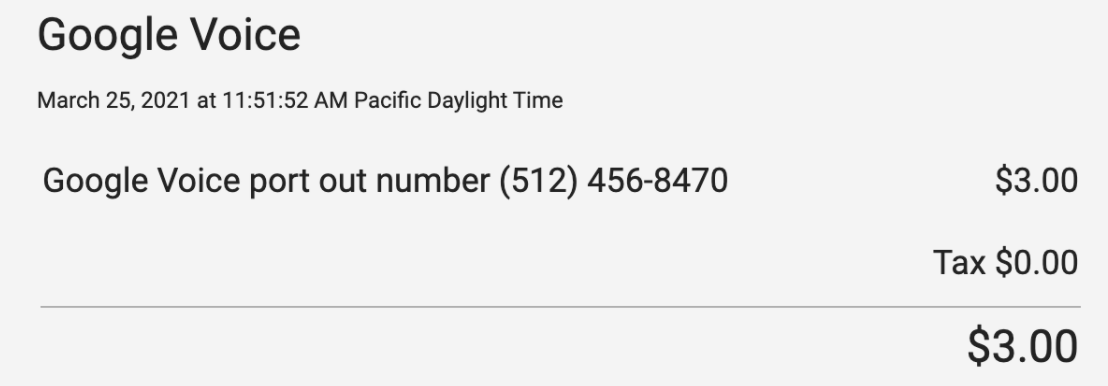
- You’ll need to pay a $3 porting fee via Google Pay to unlock your number.
Porting a number from Google Voice for Google Workspace
To move a Google Voice for Google Workspace phone number to another provider, a Google Admin on your team can take the following steps:
- Sign into the Google Admin console.
- Click Apps > Google Workspace > Google Voice > Users and select Number porting.
- Select Port-out info and click on Preview to see the port-out code.
- Copy the code.
- Your new provider may request additional information based on your location.
Porting your Google Voice number to another provider
Now that you have unbarred access to your digits, you can work on porting your number to another carrier — including the team at OpenPhone. 🙌
Here’s what you need to do:
- Sign up for a free seven-day trial to see why thousands of growing businesses use OpenPhone
- Once you’ve confirmed OpenPhone is a great fit for your team, fill out the porting request form in the OpenPhone app with all your information to initiate your porting request
- Submit it to the OpenPhone staff
- Give us about two weeks (give or take) to get everything set up
- And just like that, you’re done! Now you can upgrade to as many phone numbers as you’d like, including 1-800 numbers. Just keep in mind due to emerging regulations, to be able to text from a local number, you’ll first need to complete US carrier registration. And if you have a toll-free number, you’ll need to complete toll-free registration.
The alternative to no Google Voice toll-free numbers: OpenPhone
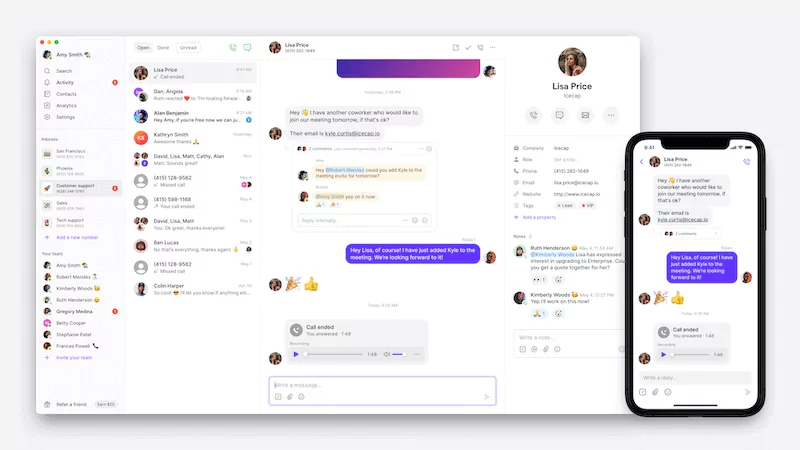
Google Voice is missing a whole lot more than just toll-free numbers. Without integrations, business SMS support, or even team collaboration, this VoIP can be extremely limiting to business growth.
If you’re looking to scale your company’s communications effectively, turning to OpenPhone as a Google Voice alternative is the obvious choice. We’re the number one rated business VoIP platform on G2 — and it’s not hard to see why. 👀
On OpenPhone, you can make and send free calls and texts to the US and Canada from almost anywhere).
Yous can use OpenPhone on nearly any device, including Android cell phones (iOS), laptops, iPhones, and tablets (all you need is WiFi). Any number of users are welcome to join our basic plan and share a business phone number with your team right out of the gate.
Collaborate via internal threads with team-only contact notes to avoid doing the same work twice. Your team can also have the proper context faster by checking voicemail transcriptions and call recordings.
And did we mention that we offer toll-free numbers? It’s easy to see OpenPhone’s solutions in action. Sign up for a free demo with a live expert for real-time Q&A, or get hands-on with our platform using a seven-day free trial.
